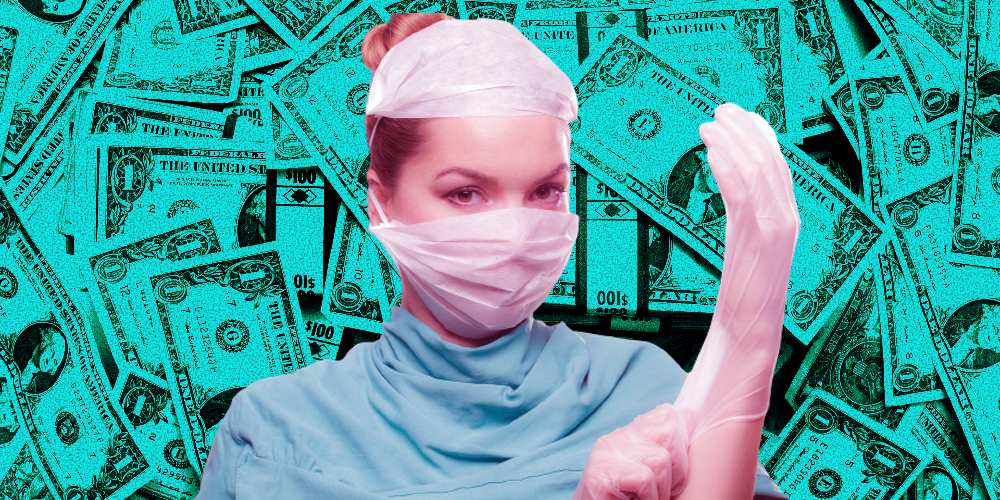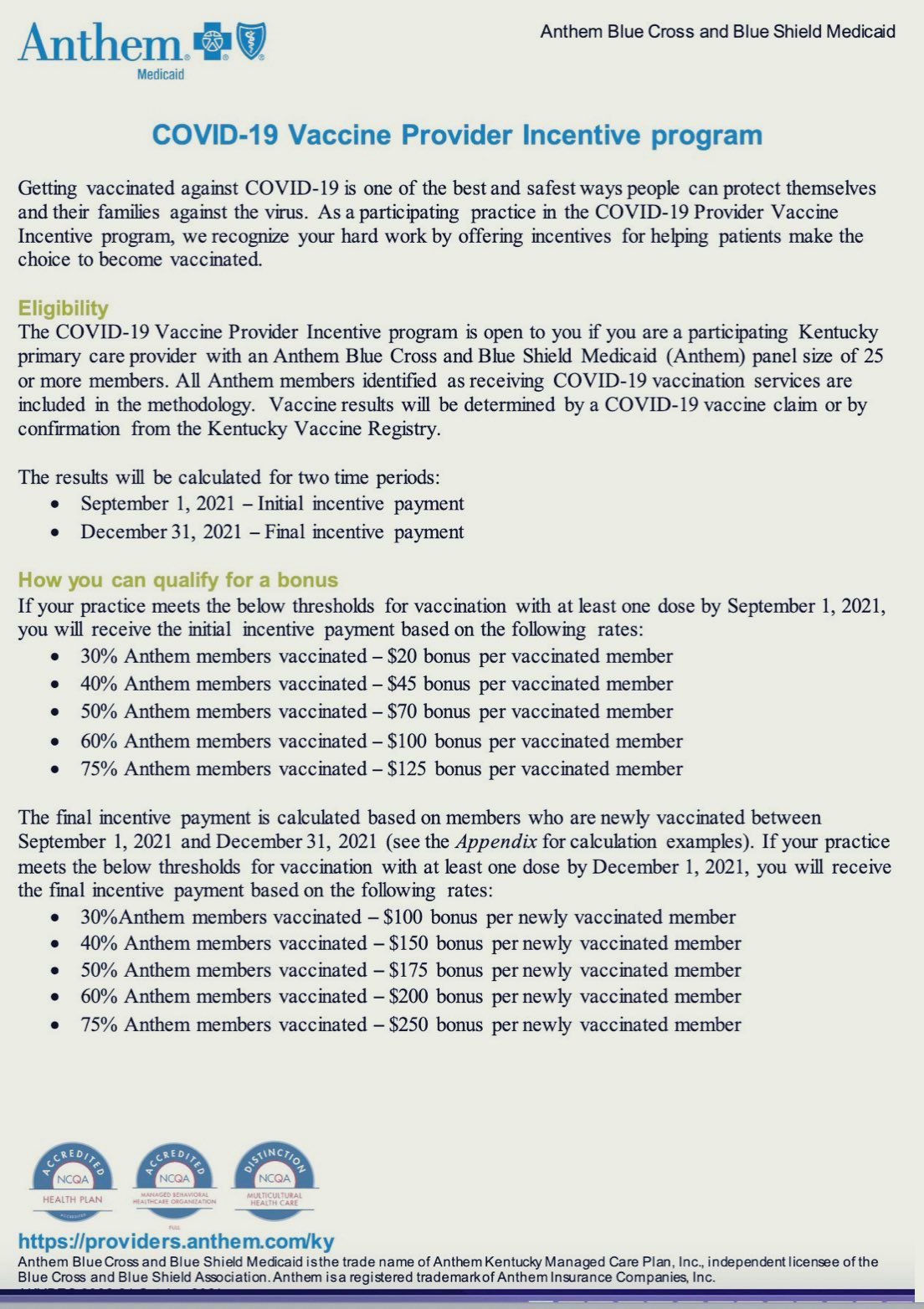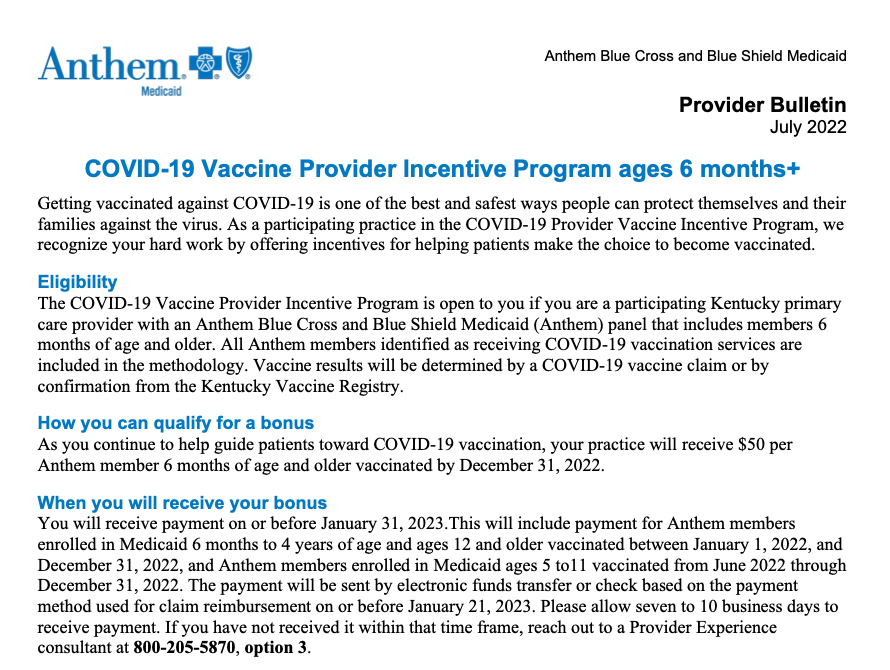As detailed in “How COVID Patients Died for Profit,” hospitals were financially incentivized to diagnose patients with COVID and treat them with protocols known to be lethal, in part to “protect” the staff from infection.
As if that weren’t bad enough, primary care providers across the U.S. were also bribed to coerce patients into getting the toxic COVID shot. The following document was posted to Twitter in mid-April 2023 by Rep. Thomas Massie, an award-winning scientist and Republican Congressman for Kentucky.1
“Beef Steak” – our most popular survival beef product – is on sale now.
Promo code “steak40” at checkout for 40% off!
“Ethically, shouldn’t doctors disclose when they’re profiting by recommending a drug or treatment — especially a drug or treatment for which there is no medical malpractice liability?” Massie said.2
Doctors Were Incentivized to Jab Babies Too
Once the U.S. Food and Drug Administration authorized the COVID shot for children, similar vaccination incentives were extended to them as well. As detailed in an Anthem Blue Cross and Blue Shield Medicaid provider bulletin3 dated July 2022, doctors received $50 for each Medicaid patient aged 6 months and older, who got the experimental shot.
Hospitals Received at Least $100 Billion From Taxpayers
In late March 2020, the U.S. Congress passed the Coronavirus Aid, Relief and Economic Security (CARES) Act.4 Within this $2 trillion stimulus package, $100 billion was earmarked for hospitals and local health centers that treated COVID patients.5
And, rather than simply agreeing to pay COVID patients’ bills, the government decided to pay hospitals extra — a lot extra — over and above the standard bill, provided they treated patients in a certain way. By the end of October 2020, $96 billion had already been disbursed.6
Ostensibly, the additional bonuses for COVID patients were supposed to help hospitals recoup revenue that was lost due to the cancelation of elective procedures. But hospitals were supposedly filled to the brim with COVID patients, so just how much revenue was lost?
The bonuses were also supposed to cover additional costs associated with caring for COVID patients, such as additional personal protective equipment (PPE) and sanitation, but that could have just as easily been covered as an extra line item, rather than a flat double-digit percentage over and above the actual cost of the treatment.
COVID-Positive Medicare Patients Worth 20% More
As reported by KGNS.TV, a local Nebraska news station, in late March 2022:7
“According to the state, since COVID hit Webb County in March of 2020, about 85,000 people have contracted the virus, with roughly half of them serious enough to be admitted into the hospital. Almost immediately, the federal government stepped in to help pay for their care with millions of dollars.
KGNS took a deeper look into this to answer the question, ‘Is there a difference in how much hospitals get paid back by the government when caring for a positive COVID patient versus a non-COVID patient?’ The answer to that is ‘yes.’ People on government programs, such as Medicare, are worth more.
According to section 3710 of the Cares Act, hospitals are reimbursed by the government an extra 20% for each hospitalized Medicare patient. The only criteria for that extra money? A positive COVID test.8,9,10
For instance, hospital Medicare patient with pneumonia — without COVID — is worth about $7,700 to the hospital. But with COVID, that reimbursement jumps to over $9,200.
A Medicare patient with Acute Respiratory Distress Syndrome requiring a ventilator? Without COVID, the bill is around $34,000. But with COVID, that Medicare patient now worth almost $40,000. And the list goes on.”
On top of those incentives, the federal COVID-19 Treatments Add-On Payment program also paid hospitals bonuses for every COVID-19 patient treated with emergency authorized COVID medications (Remdesivir, convalescent plasma, Baricitinib, Molnupiravir and Nirmatrelvir) and mechanical ventilation.11
It doesn’t seem like decisionmakers considered the possibility that incentivizing hospitals to diagnose patients as having COVID might impact patient care, outcomes and/or COVID statistics, but it most certainly did. To presume hospitals would think twice about treating patients with a particular drug or put them on a ventilator when they get reimbursed top dollar for it is naïve in the extreme. Especially when all they needed was a positive PCR test to justify it.
Throughout 2020, evidence mounted showing the PCR test is incredibly unreliable above 35 cycles, and health agencies instructed labs to use 40 to 45 cycles. In essence, we had an epidemic of false positives, and financial incentives then drove hospitals to mistreat and kill countless patients, many of whom may not even have had COVID.
Former CDC director Robert Redfield and Brett Giroir, assistant secretary for health in the U.S. Department of Health and Human Services, have both stated they believe financial incentives drove up the COVID-19 death rate in the U.S.12
Vented COVID Patients Earned Hospitals 300% Upcharge
I strongly suspect the reason why so many COVID patients died was because they were forced onto mechanical ventilation, and the reason for that was because hospitals received a 300% bonus for patients requiring ventilation! That’s no minor incentive. As reported by USA Today back in April 2020:13
“Sen. Scott Jensen, R-Minn., a physician in Minnesota, was interviewed by ‘The Ingraham Angle’ host Laura Ingraham on April 8 on Fox News and claimed hospitals get paid more if Medicare patients are listed as having COVID-19 and get three times as much money if they need a ventilator …
Jensen took it to his own Facebook page April 15, saying, in part ‘How can anyone not believe that increasing the number of COVID-19 deaths may create an avenue for states to receive a larger portion of federal dollars? Already some states are complaining that they are not getting enough of the CARES Act dollars because they are having significantly more proportional COVID-19 deaths.’
On April 19, he doubled down on his assertion via video on his Facebook page. Jensen said, ‘Hospital administrators might well want to see COVID-19 attached to a discharge summary or a death certificate. Why?
Because if it’s a straightforward, garden-variety pneumonia that a person is admitted to the hospital for — if they’re Medicare — typically, the diagnosis-related group lump sum payment would be $5,000. But if it’s COVID-19 pneumonia, then it’s $13,000, and if that COVID-19 pneumonia patient ends up on a ventilator, it goes up to $39,000.’
Jensen clarified … that he doesn’t think physicians are ‘gaming the system’ so much as other ‘players,’ such as hospital administrators, who he said may pressure physicians to cite all diagnoses, including ‘probable’ COVID-19, on discharge papers or death certificates to get the higher Medicare allocation allowed under the Coronavirus Aid, Relief and Economic Security Act …
USA TODAY reached out to Marty Makary, a surgeon and professor of health policy and management at Johns Hopkins Bloomberg School of Public Health, about the claim. Makary said in an email April 21 that ‘what Scott Jensen said sounds right to me.’”
Why Did Government Continue Paying for Deadly Protocol?
Why wasn’t the 300% bonus payment eliminated once it became apparent that putting COVID patients on ventilators was a death sentence? As early as April 9, 2020, Business Insider reported14 that 80% of COVID-19 patients in New York City who were placed on ventilators died, which caused a number of doctors to question their use.
The Associated Press15 also publicized similar reports from China and the U.K. A U.K. report put the figure at 66%, while a small study from Wuhan, China, put the ratio of deaths at 86%. Data presented by attorney Thomas Renz in 2021 showed that in Texas hospitals, 84.9% of patients died after more than 96 hours on a ventilator.16
The lowest figure I’ve seen is 50%.17 So, somewhere between 50% and 86% of all ventilated COVID patients died, yet government never dropped the financial incentive to use ventilators. Why?
Incentives Put Nursing Home Patients at Risk Too
Nursing homes in some states also received incentive payments if they accepted hospital discharges. For example, in Wisconsin, the Department of Health Services (DHS) paid out $2,900 for every admission a nursing home received directly from a hospital.18
This, even though by then, it was well-known that more than 80% of deaths occurred in nursing homes, assisted living facilities and live-in rehab centers. More than 90% of residents of these centers have at least one chronic disease and more than 70% have two conditions, which in turn can weaken their immune systems.19
They also live in close quarters and share staff, which facilitates the spread of pathogens. But rather than protecting the elderly by NOT admitting potentially infected patients, the DHS paid these facilities to take them in.
Incompetence or Malice?
In the final analysis, it’s quite clear that the COVID pandemic was grossly mishandled. Either U.S. health agencies and political decisionmakers were inept and unqualified for the job at hand, or they acted with malice, and the outcomes of their financial incentivization of bad medicine were intended ones.
Either way, their strategies were ill-conceived and resulted in needless death and suffering. Adding insult to injury, billions of taxpayer dollars were used to pay for it all. Financially incentivizing doctors and pediatricians to inject an experimental gene therapy into babies is, in my view, completely unconscionable, and should never have happened, but the same can be said for the continued use of ventilators.
It seems medicine during the COVID pandemic became all about maximizing profits, without regard for health outcomes, and that is something that our health agencies must be held to account for.
- 1, 2 Twitter Thomas Massie April 13, 2023
- 3 Anthem Blue Cross and Blue Shield Medicaid Provider Bulletin July 2022
- 4 Revcycle Intelligence March 26, 2020
- 5 Fierce Health Care March 25, 2020
- 6 PGPF.org November 5, 2020
- 7, 11 KGNS.TV March 28, 2022
- 8 Healthcare Finance News August 18, 2020
- 9 HFMA April 21, 2020
- 10 AHA.org Guidance for CARES Act Provisions April 16, 2020
- 12 Organic Lifestyle Magazine August 25, 2020
- 13 USA Today April 24, 2020, Updated April 27, 2020
- 14 Business Insider April 9, 2020
- 15 The Associated Press April 8, 2020
- 16 Citizens Journal December 20, 2021
- 17 Wall Street Journal December 20, 2020
- 18 WHA November 12, 2020
- 19 Newswise May 15, 2020






Docs have always been bribed with high salaries to magically not “see” cheap safe effective remedies of “alternative” medicine: https://www.rolf-hefti.com/covid-19-coronavirus.html
It’s a medical mafia that attracts low lives like most regular docs many of which are psychopaths (see cited url) …
“… doctors and scientists are now on the same lever of public confidence as the scum living in the swamp.” — Unknown in 2022